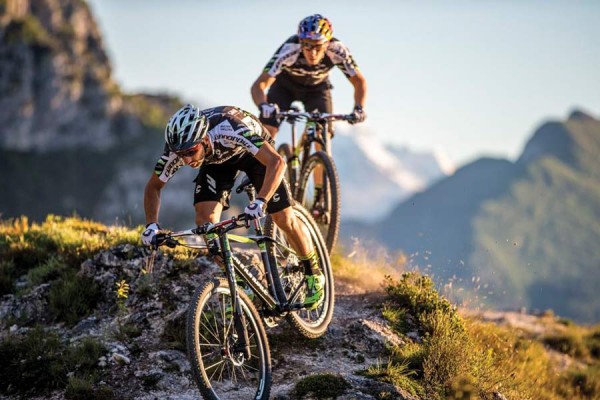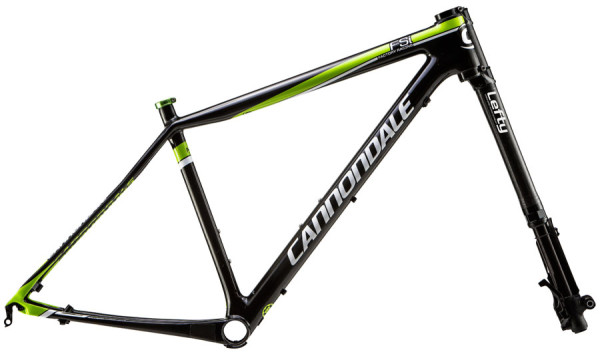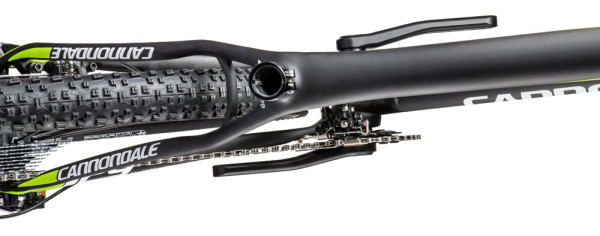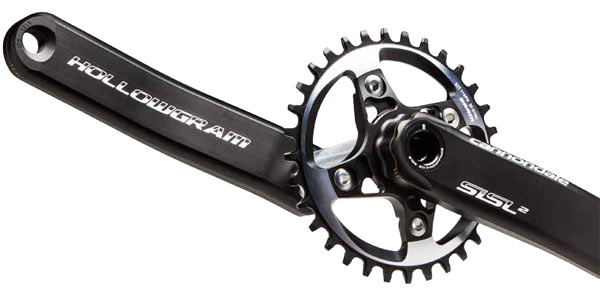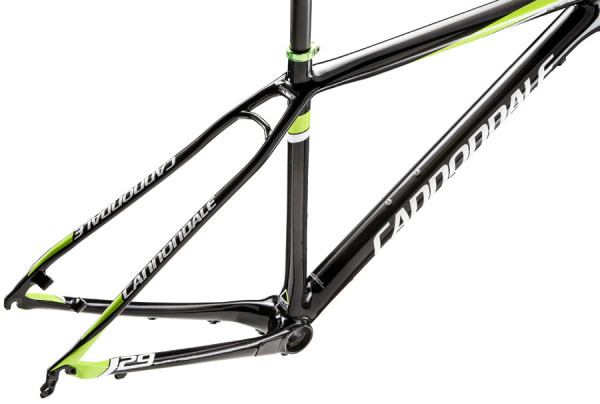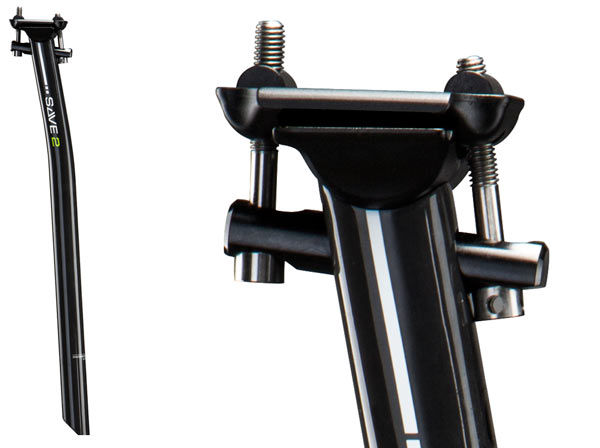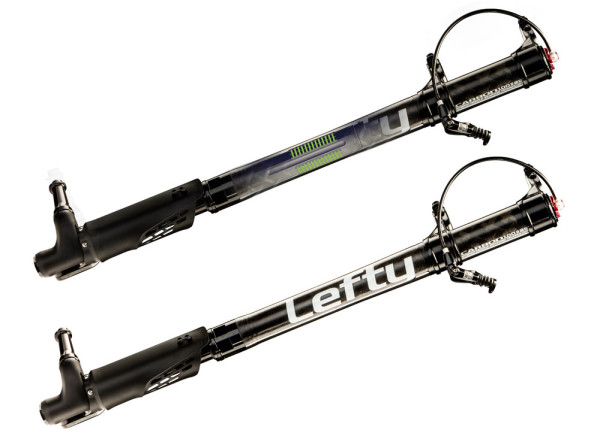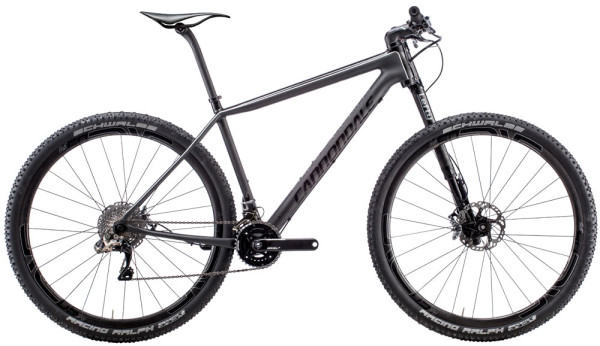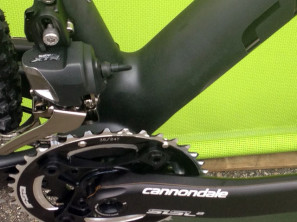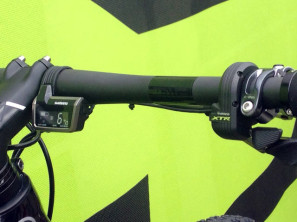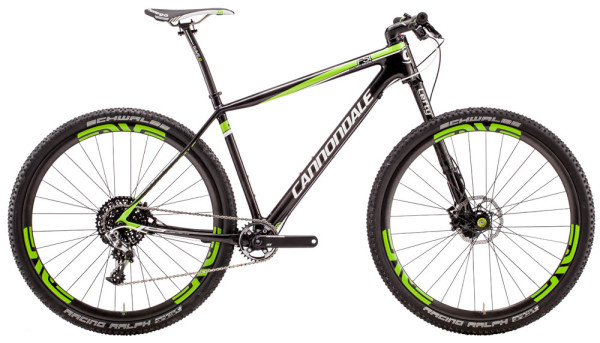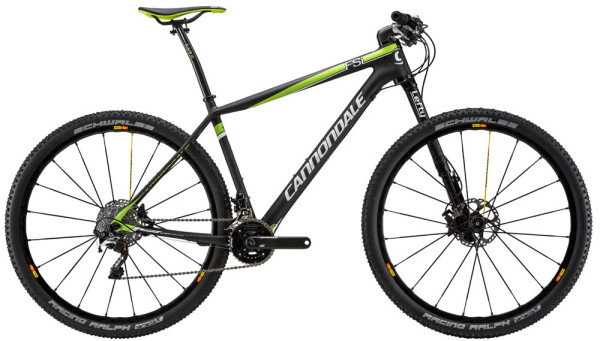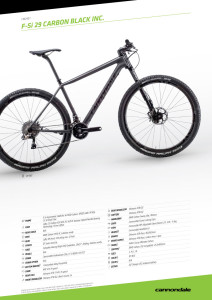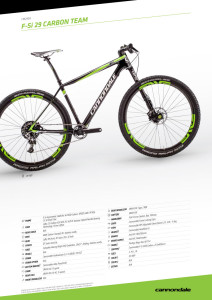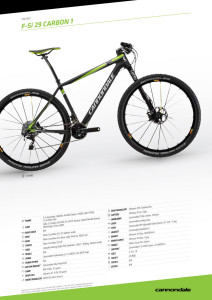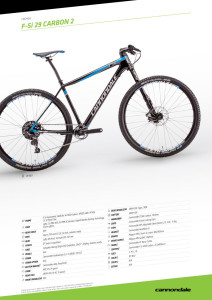When the Flash 29 debuted a couple years ago, it brought Cannondale’s System Integration (Si) to the frame with things like their OPI stem/steerer with Lefty fork and tuned SAVE seatstays. The all-new F-Si takes everything a step further by shifting the drivetrain off center, building a new Lefty, a new crank spider and adding a new SAVE seatpost to amplify the comfort of the micro suspension built into the frame.
The result, they say, is the fastest race bike because, rather than just thinking about the frame itself, it’s designed as a complete bike in mind. That’s also how Cannondale builds some of the lightest bikes out there, by creating some of their own components (Hollowgram cranks, Lefties, etc.) to ensure things work together smoothly and quickly.
So, what’s new?
Starting with the whole frame, the geometry’s been changed to create a bike that’s simultaneously fast, stable and nimble. To get the “fast”, they shortened chainstays to a minuscule 429mm (16.88″), shorter by 15mm than before. To get the “stable and nimble”, they matched a slack 69.5º head angle with a 55mm offset Lefty fork. The head angle keeps things stable at speed while the short offset keeps handling snappy in the tight stuff.
These numbers work because a bigger offset decreases the fork’s trail, putting the tire/ground contact patch more in line with the steerer’s center line (click here for diagrams and better descriptions). The prior Lefty 29er was 45mm offset, and typical 29er forks are around 47mm.
To get chainstays that short without compromising 2x compatibility and mud clearance, they had to shift the rear hub and drivetrain to the right by 6mm. That let them keep tire clearance on the inside of the chainstays and front derailleur clearance on the outside. If you notice, the front derailleur cage extends behind the front of the rear tire, so by keeping spaced off to the side, it let them bring the rear wheel up closer. This keeps rider weight over the rear tire for solid traction while climbing and super stiff power transfer.
The new spider moves the chainrings out 6mm without affecting the spindle length or Q-factor. Out back, they had to move the hub 6mm right, also, which typically would shift the tire off the bike’s center line. To remedy this, Cannondale has the wheels built with zero dish, which brings the rim into center line without needing any proprietary parts. In the event you wanted to use your existing wheels, you’d probably need to have them redished or possibly rebuilt, but you could keep your existing hubs and rims.
All of this comes together in a complete bike package that they say is stiffer and lighter than bikes using a rear thru axle. Yep, that’s right, they’re sticking with quick release rear ends. It’s a race bike after all, so weight and quick wheel changes were of equal importance to stiffness and efficiency.
The rest of the frame keeps their SAVE micro suspension seatstays and BallisTec carbon construction where it counts. Keeping with the race theme, they kept all cable routing external. This saves weight compared to an internal routing and makes team mechanics’ lives much easier. There is, however, internal wiring ports for electronic shifting systems.
Frame weight is claimed at 1,022 with all hardware (seat clamp, FD mount and cable guides). This is an externally validated, third party measurement. That said, they say they’ve weighed several models in house that have come in at 960g.
Complementing the frame is an all-new SAVE seatpost. This version drops 47g while boosting compliance by 20%. The flex is also more linear, which they say helps keep it bending under lighter loads. In other words, it’s more sensitive and should be more comfortable.
For the Lefty’s, offset isn’t the only change. The uppers are 2mm larger, yielding a 44mm diameter top structure to make it stiffer. Inside, there’s an all new damper, similar to the SuperMax on the Jekyll. They say it needed an update to handle the more aggressive nature of World Cup XC courses. So, now it’s more supple and there’s more air volume.
More clamp widths are offered now (not just one), which means they fit each size frame specifically. For smaller bikes, that helps keep the front end low, and it all looks much better.
2015 CANNONDALE F-Si MODELS
At the top of the roost is the F-Si Carbon Black Inc., which gets Shimano’s new XTR Di2.
Full spec lists and sales sheets for all models are at bottom of post, just click to enlarge.
The F-Si Carbon Team model keeps the ENVE rims but moves to a SRAM 1×11 drivetrain.
The F-Si Carbon 1 gets custom drilled and laced Mavic Crossmax SL wheels…so this is your first look at the next generation Crossmax. Shhhhhhhh… Below this is the Carbon 2 model, shown on the sales sheets below.
SALES SHEETS
All models will be available in August, pricing TBA.
